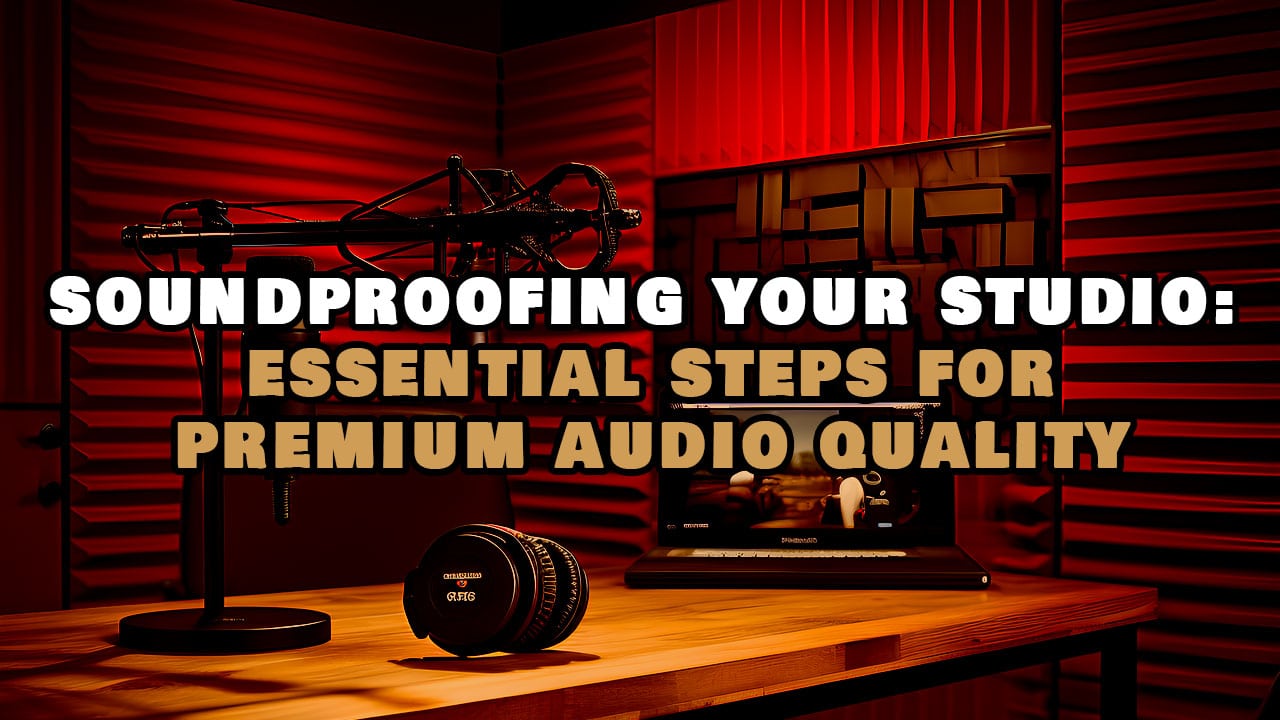Creating a sound-quality environment is essential when it comes to producing music or recording audio. Whether you’re a musician, podcaster, or voice actor, setting up a studio is crucial for achieving audio quality. Soundproofing plays a vital role in eliminating noise and unwanted reverberation, allowing you to focus on capturing clear and professional sound. In this blog post, we will explore the steps to soundproof your studio effectively and create an environment that promotes premium audio production.
1. Evaluating the Space
Before embarking on the soundproofing process, it’s important to assess your studio space. Take note of any sources of noise that might affect your recordings, such as traffic sounds, neighboring activities, or nearby construction work. Pay attention to windows, doors, and walls that may require treatment. Understanding the weaknesses of your studio will help you prioritize the steps for effective soundproofing. Once you evaluate your space, you get more sure about the kind of smart radio programming you need.
2. Closing Gaps and Openings
One of the causes of leakage in a studio is gaps and openings that allow air and sound to pass through easily. Begin by sealing any cracks or crevices found in walls, windows, and doors. Utilize weather stripping, acoustic caulk, or foam tape as methods for sealing these gaps
To significantly minimize noise and enhance isolation, it is important to prevent sound leakage.
3. Treating Doors and Windows for Acoustic Control
In a studio, doors and windows can be sources of leakage. To create a barrier and reduce the transmission of noise, consider investing in solid core doors. Enhancing isolation can be further achieved by adding door sweeps and acoustic gaskets. For windows, installing glazed windows or adding a layer of panes can effectively block external noise from entering your studio, ensuring improved audio quality.
4. Soundproofing Walls and Ceilings
Creating a controlled environment in your studio requires soundproofing of walls and ceilings. A used method is utilizing mass-loaded vinyl (MLV) or soundproof drywall. MLV is a flexible material that can be installed between layers of drywall to effectively reduce transmission. Soundproof drywall, also known as soundboard, offers enhanced isolation capabilities making it an excellent choice for studio soundproofing, which will further help you in radio programming. Additionally, incorporating panels or diffusers, on the walls and ceiling helps control reflections and reverberations, leading to more professional audio recordings.
5. Insulating the Flooring
Floor insulation is often underestimated when it comes to soundproofing. It actually plays a vital role in reducing impact noise and footfall vibrations. One effective way to achieve this is by adding a layer of carpet with padding or using underlayment beneath hardwood or tile floors. This helps absorb sound and prevents impact noise from traveling through the floor. This step becomes especially important if you live in a story building or have noisy neighbors below.
6. Ventilation and HVAC Considerations
Proper ventilation is crucial for maintaining a healthy studio environment. However, vents and HVAC systems can create points where sound can leak if not properly addressed. To minimize transmission, consider installing ducting or adding soundproof insulation material around ventilation ducts. Another option is using an in-line fan or a dedicated ventilation system that incorporates noise-reduction features. This allows for air circulation without compromising your soundproofing efforts.
7. Isolation Techniques
Isolation techniques are key to preventing leakage between areas of your studio space. For instance, if you have both a control room and a recording room, it’s important to isolate these spaces from each other to avoid cross-contamination of sounds. One effective method is using double-layered drywall or resilient channels that help decouple the walls and ceiling from the structure, reducing vibrations and minimizing the transfer of sounds.
8. Bass Traps and Sound Absorption
Dealing with low-frequency sounds, like bass, can pose a challenge when setting up a studio. One effective solution is to use bass traps which are dense acoustic panels placed in the corners of the room. These traps help absorb the sound waves, reducing any unwanted resonance in the room and enhancing audio clarity. Another helpful technique is strategically positioning absorption panels throughout the studio to control reflections, echoes, and reverberations. This approach results in a controlled sound environment.
In conclusion
Taking these steps to soundproof your studio is crucial for achieving top-notch quality. By sealing gaps and spaces, treating doors and windows, soundproofing walls and ceilings, insulating the floor, and considering ventilation systems, utilizing isolation techniques, along with bass traps and absorption panels—you can create a controlled space. With soundproofing in place you’ll be able to concentrate on your process while capturing crystal clear and professional quality audio recordings that truly shine. So don’t hesitate to invest in soundproofing your studio today; it will take your production to heights.




